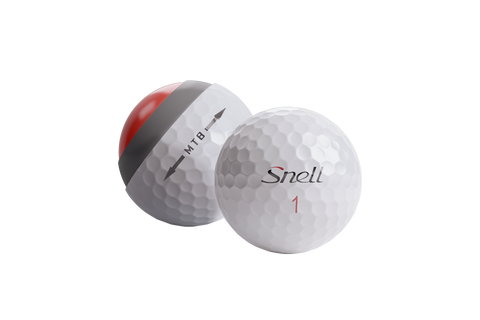Key Golf Ball Technologies
The golf ball can be constructed many ways, but the ball is primarily structured out of 4 elements that can be changed to affect performance. They consist of the core, mantle, cover, and dimple pattern. Here is a an explanation of the key technology elements of the golf ball:

CORE:
The core is the engine of the golf ball. It is the largest mass and volume of the ball, and is used to help control the driver spin rate. Lower core compressions will generate lower driver spins, which are preferred for longer drives. The core also plays a key role in the overall ball speed of the golf ball. There are limits per the USGA on ball velocity, and we use the core formulations to control the speed to deliver the maximum allowable speed. The core also plays a role in the overall ball compression, as well as the overall feel of the ball. Typically, when core compressions get softer, the ball speed gets slower. We have developed a core technology that allows the cores to be soft, low compression, BUT maintain the fast speed needed to increase distance. Cores are typically made from polybutadiene rubber along with several chemicals and fillers to control weight, compression and speed of the core.MANTLE:
The multi-layered balls came out in the mid 90’s, where layers were added between the core and the cover to help change the way the ball performs tee to green. The mantle layer plays a key role in controlling the amount of iron spin, and works with the core on drivers and long shots to help keep spin low, but then works with the cover on short iron and chip shots to help increase spin and improve control and accuracy. The mantle layer is developed to help maintain fast ball speeds, and also has an influence on the final ball compression and feel. Typical materials used in mantle layers are various hardness Surlyns and ionomers, as well as some thermoplastic materials and polybutadiene rubbers. Surlyn® is a tradename of Dupont.COVER:
The cover of the golf ball is the visible part of the ball, and usually ranges in thickness from 0.030” to 0.070” depending on materials and processes used in manufacturing. The covers are typically made of Surlyn® or ionomer material blends, thermoplastic urethane, crosslinked (x-linked) urethane, or thermoset cast urethane. Typically ionomer blends are used on cheaper balls, while thermoplastic, x-linked, and thermoset cast urethane materials are used on higher end tour balls.DIMPLES:
The final stage of any development is the dimple design. Once the ball development is complete, and the spin rates of the balls are known, then the aerodynamics are created to help control the flight. We vary the dimple sizes, depths, edge angles and shapes around the ball to control the lift and drag coefficients on the ball. Too much lift will create ballooning and shoot up into the sky and be short, while too much drag will make the ball fall out of the sky. So controlling the two will create the best carry and roll and maximize distance. The numbers of dimples don’t really control the ball flight, but most balls today run between 300 and 400 dimples.
Pic: The original My Tour Ball (MTB) at Snell Golf launch in 2015.


